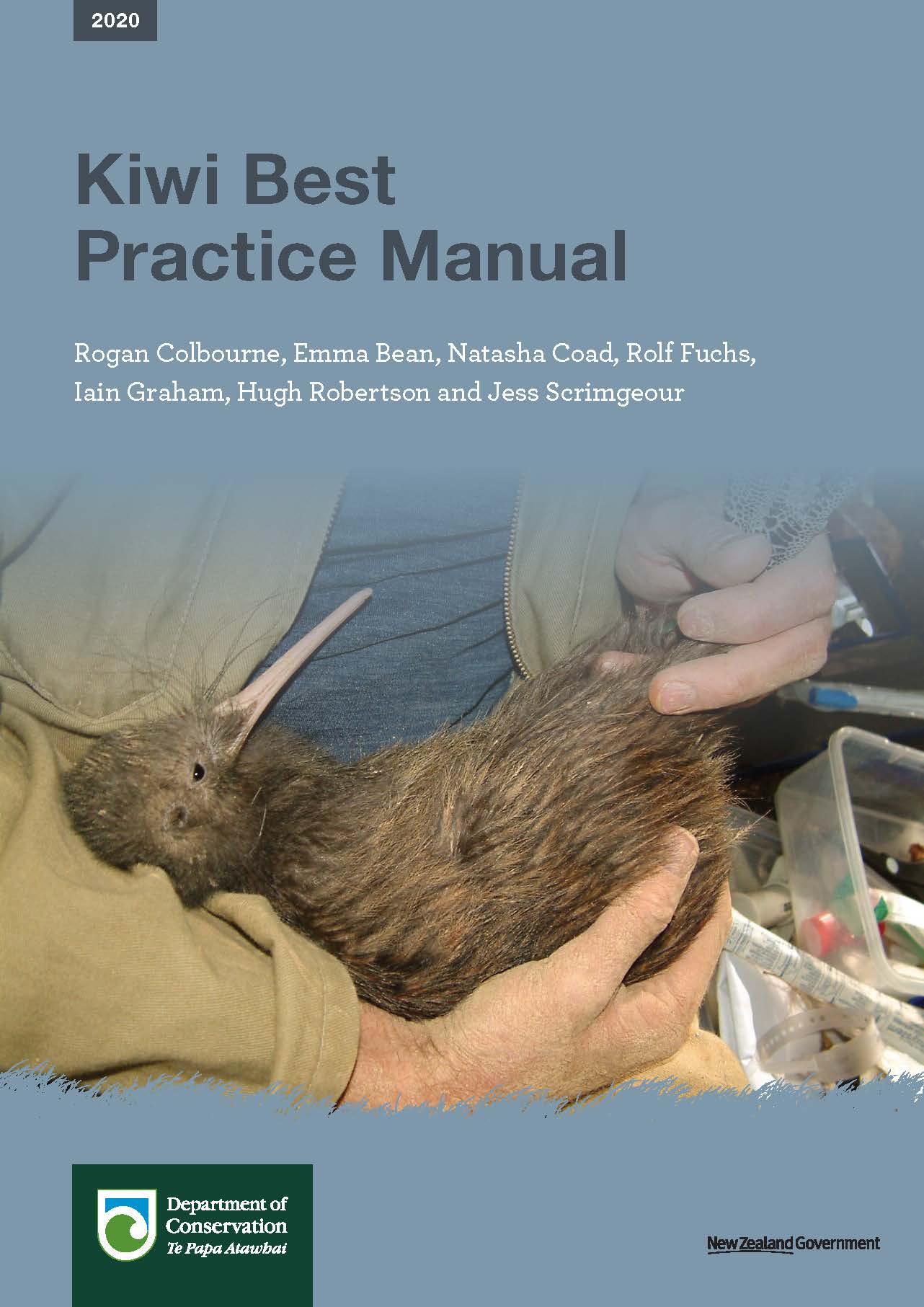 Download the publication
Download the publication
Kiwi best practice manual (PDF, 5,390K)
Objectives
The objectives of this best practice manual are to:
- provide information and resources about the best routinely used techniques that are currently available for managing and studying kiwi
- help to formalise consistent management practices across kiwi taxa throughout New Zealand
- provide a mechanism for advocating the continuous improvement of kiwi conservation management and research In this way, this resource will ensure that the best possible welfare standards are applied during the management and research of kiwi, as required under the Animal Welfare Act, 1999.
Updates to the manual
The manual was last reviewed, updated and published in 2017. However, kiwi management is a huge topic and new techniques are being developed at a rapid rate, such as the use of acoustic recorder analysis software, GPS trackers on kiwi and increasing demand for using kiwi as advocacy tools.
The Kiwi Recovery Group has recognised these issues and created a Best Practice Committee which will now review the best practice each year. This will result in the manual being updated in small increments rather than one big task every five years.
Since the publishing of the previous manual, there had already been several instances where best practice needed to be updated or tightened up. These were:
- Giving clarity over what is required to be assessed for to handle kiwi, band, insert transponders and wing tags. This also covers what is needed to become a trainer.
- Aligning dog handling for kiwi protection work with Dogs for Conservation SOP.
- BP says that chicks are not allowed to be used for advocacy, but there are currently several examples of permits given that allows for people to observe practitioners undertaking health checks and transmitter changes. These permits now have conflicting conditions where one says they need to follow best practice, while at the same time permitting them to use chicks for advocacy in this capacity. Clarity is now given.
- The Banding Office had highlighted that they disagreed with Kiwi Best Practice of allowing one kiwi to be banded multiple times to gain experience. Now kiwi can no longer be banded more than two times for experience. They have also raised that to be an accredited handler for banding of kiwi, they need to be registered with the Banding Office.
- Recent video of kiwi carrying transmitters show frequently birds are irritated by them. Some practitioners are using transmitters far too heavy for the age of the bird. New percentage weights of transmitter and harness are given for weights of kiwi.
- Catching kiwi at nests
- Setting up field cameras at nests
- Night tour protocols
- Updating sourcing acoustic recorders.
- Using gloves when inserting transponders has been removed as advice from vets is it is important to be able to manipulate the insertion site more fully using clean hands only.
There are likely other examples that we are or not aware of, therefore doing a call-out a month or so before the committee meeting to practitioners for issues that need to be discussed would be a good way to find what other topics need to be discussed.
Contact
We seek feedback from kiwi practitioners to update or improve the Kiwi Best Practice Manual.
If you have any suggestions email the chair of the committee, Rogan Colbourne, rcolbourne@doc.govt.nz.